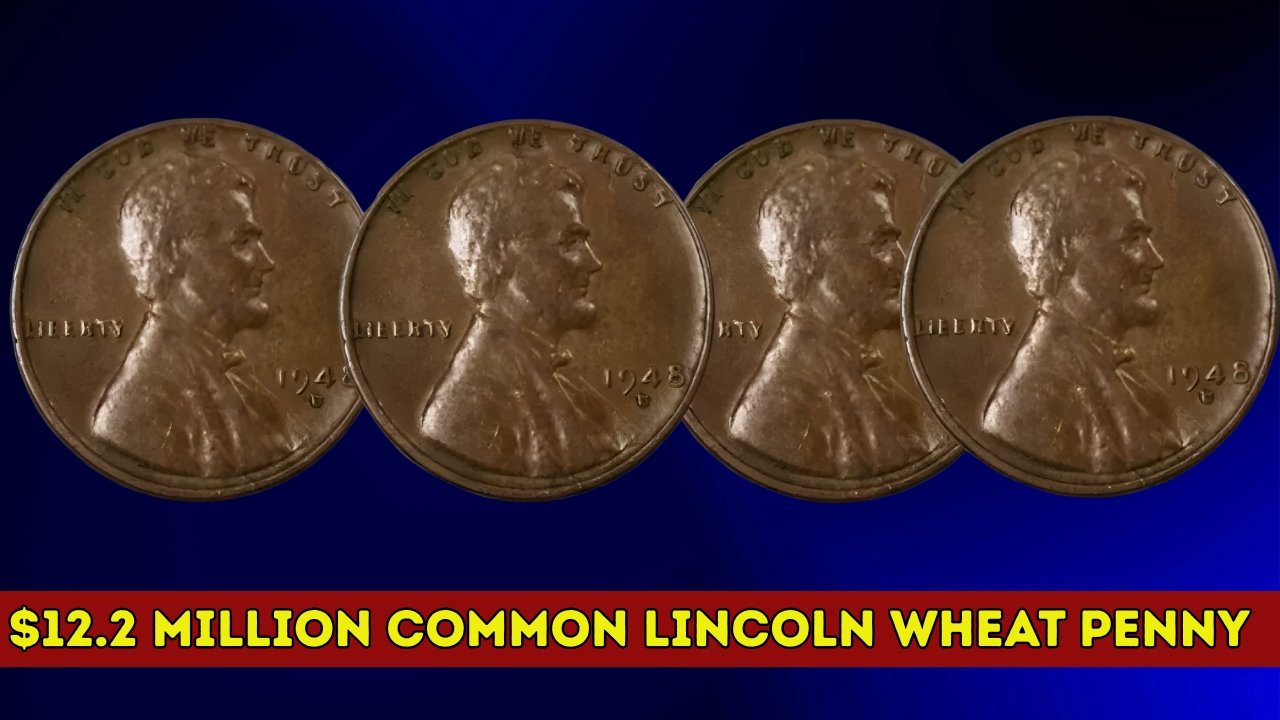Let’s be real for a second—most of us don’t think twice before tossing spare change into a jar or the car cup holder. Pennies? They’re the most ignored coins out there. But what if I told you one of those humble copper-colored coins could actually be worth $12.2 million? Sounds unbelievable, right? Well, it’s true. A rare WWII-era Lincoln Wheat Penny, made from bronze instead of steel, has fetched jaw-dropping prices at auctions—and yes, one of them could still be hiding in someone’s wallet or old coffee can.
A Quick Flashback to the WWII Era
To really understand why this penny is worth a fortune, we’ve got to take a small trip back to 1943. During World War II, the U.S. was facing a serious shortage of copper. The military needed every bit of it for ammunition and other wartime essentials. So, the U.S. Mint decided to produce pennies using zinc-coated steel instead of the usual bronze (which is mostly copper).
That year, nearly one billion 1943 steel cents were struck. They had a silvery-gray look, kind of like a dime. But here’s where things get interesting: a few bronze planchets—those copper blanks left over from 1942—accidentally got mixed into the presses. The result? A handful of 1943 bronze wheat pennies slipped through the cracks.
And those “mistakes” are now worth millions.
The $12.2 Million Discovery
One of the most stunning stories came from a collector who discovered that his 1943 bronze Lincoln Wheat Penny was not just a rare coin, but an ultra-rare error worth $12.2 million. The coin was authenticated and graded by experts, confirming its authenticity as one of the original bronze-struck errors from the WWII period.
It’s wild to think that a penny—a coin worth just one cent—could sell for the price of a luxury mansion. But that’s the magic of numismatics (coin collecting). Sometimes, history, luck, and a tiny mistake combine to create something truly priceless.
How to Identify a 1943 Bronze Lincoln Wheat Penny
If you’re now eyeing your change jar suspiciously (and you absolutely should), here’s how you can spot the real deal:
| Feature | Description |
|---|---|
| Date | 1943 (check carefully—fake ones often alter 1948 to look like 1943) |
| Material | Bronze or copper, not steel (steel ones will stick to a magnet) |
| Color | Warm reddish-brown tone instead of silver-gray |
| Weight | Around 3.11 grams (steel ones are lighter, about 2.7 grams) |
| Mint Marks | Can have no mint mark (Philadelphia), “D” (Denver), or “S” (San Francisco) |
Here’s a quick trick: grab a magnet. If the coin sticks, it’s steel—nothing special. But if it doesn’t? Well, you might be holding something life-changing.
Why It’s So Valuable
So why exactly does a penny like this command such a staggering value? A few reasons:
- Rarity: Only a handful (maybe 10 to 15 known) of these 1943 bronze cents exist.
- Historical Error: It’s a direct product of WWII-era minting chaos—an authentic wartime mistake.
- Condition: High-grade examples, especially uncirculated ones, can fetch exponentially higher prices.
- Collector Demand: Coin enthusiasts, history buffs, and investors all want a piece of this story.
To be fair, it’s not just about the metal or the minting mistake—it’s about owning a slice of American history.
Real-Life Stories of Discovery
Over the years, several of these coins have surfaced in the most unexpected ways.
One was reportedly found in a school cafeteria. Another popped up in a child’s coin collection passed down from a grandparent. These aren’t myths—they’re real finds, verified and sold for astronomical amounts.
Imagine cleaning out an old drawer and discovering a fortune sitting under a pile of paperclips. Honestly, stranger things have happened.
Could You Still Find One Today?
Surprisingly, yes! Experts believe that a few more 1943 bronze pennies might still be out there, hiding in old piggy banks, dusty jars, or family keepsake boxes. Since they look almost identical to regular pennies, they often go unnoticed.
If you have any old Wheat Pennies—especially from 1943—it might be time to pull out a magnifying glass.
A Quick Recap Table
| Coin Type | Year | Metal Composition | Approx. Value (in perfect condition) | Notable Feature |
|---|---|---|---|---|
| 1943 Steel Cent | 1943 | Zinc-coated steel | $0.10 – $2 | Silvery appearance, magnetic |
| 1943 Bronze Wheat Penny | 1943 | 95% copper, 5% tin/zinc | Up to $12.2 million | Non-magnetic, bronze tone |
| 1944 Steel Wheat Penny | 1944 | Zinc-coated steel | Up to $200,000 | Reverse of the 1943 error |
It’s amazing how something so ordinary can turn out to be so extraordinary. The $12.2 million Lincoln Wheat Penny is more than just an expensive coin—it’s a historical gem, a symbol of wartime America, and proof that mistakes can sometimes be worth millions.
So next time you get change at the grocery store or dig through your piggy bank, don’t rush to toss those pennies aside. Who knows? You might just be holding a tiny piece of U.S. history—and maybe, a $12 million surprise.
FAQs
1. How much is a 1943 bronze penny really worth?
Authentic 1943 bronze pennies can fetch between $300,000 and $12.2 million, depending on condition and mint mark.
2. How can I test if my 1943 penny is bronze?
Use a magnet! If it doesn’t stick and looks reddish-brown, you might have a bronze penny.
3. Where can I get my penny authenticated?
Reputable services like PCGS or NGC can professionally grade and verify your coin.
4. Can regular 1943 steel pennies be valuable?
Most are worth just a few cents to a few dollars unless they’re in uncirculated or error condition.
5. Are there fake 1943 bronze pennies?
Yes, many fakes exist. Counterfeiters sometimes alter 1948 coins or coat steel pennies with copper. Always verify authenticity with experts.

